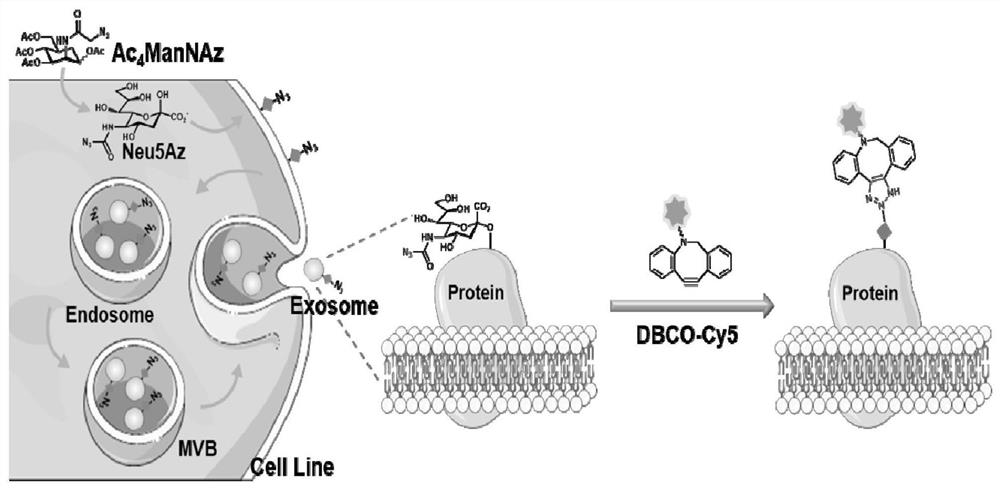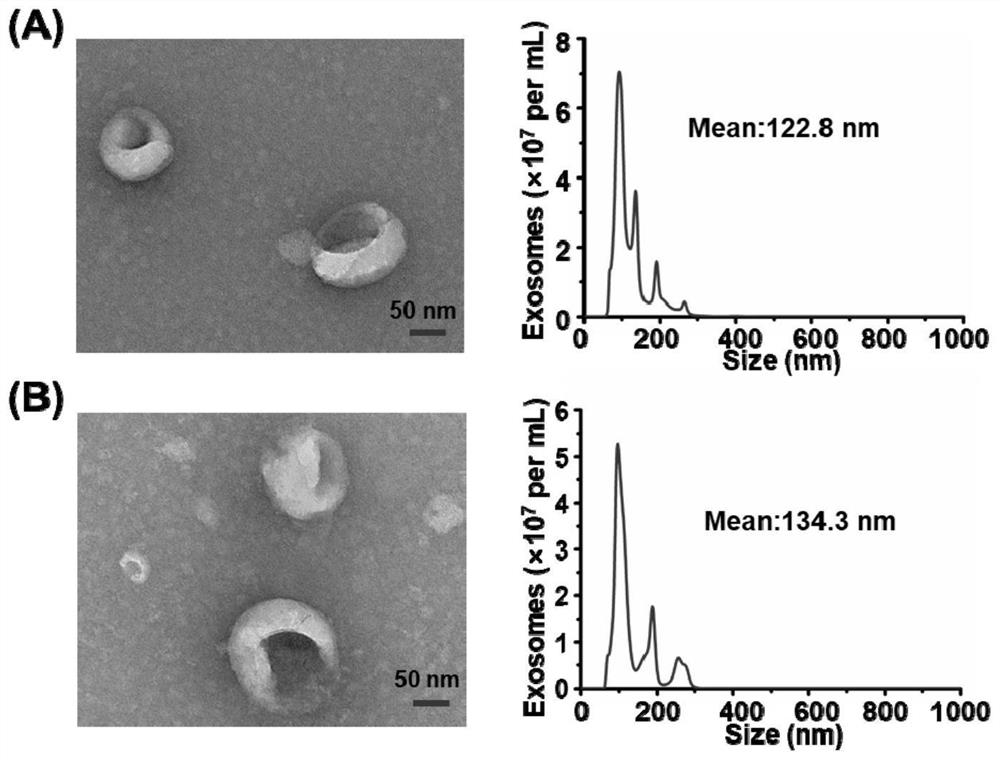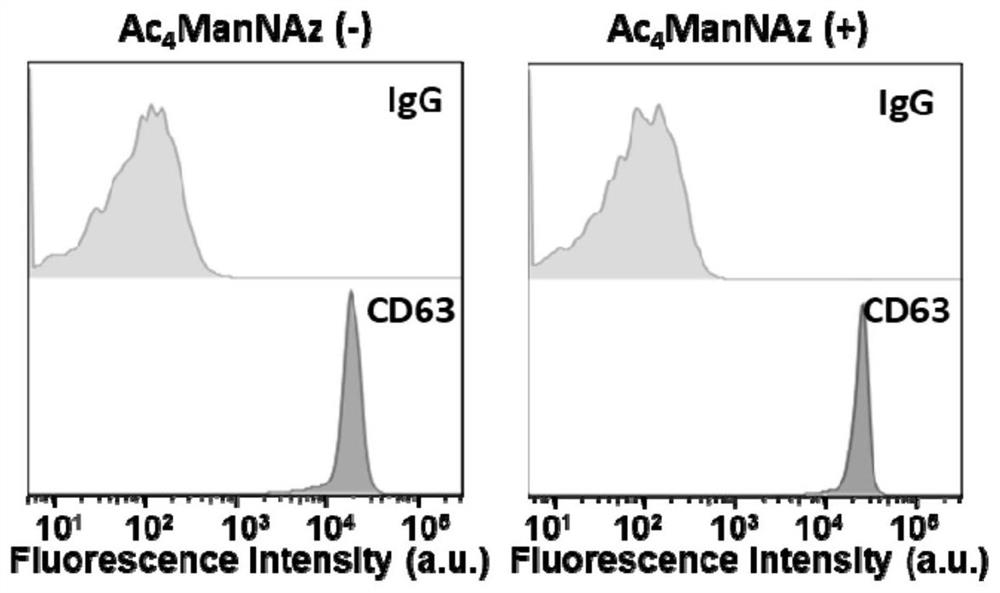Glycosylation research method of exosomes
An exosome and glycosylation technology, applied in biochemical equipment and methods, epidermal cells/skin cells, material separation, etc., can solve problems such as inappropriate exosome glycosylation function research, and maintain integrity and activity, small influence, small effect of steric hindrance
- Summary
- Abstract
- Description
- Claims
- Application Information
AI Technical Summary
Problems solved by technology
Method used
Image
Examples
Embodiment Construction
[0035] In the following examples, the study on the glycosylation of exosomes expressing PD-L1 is taken as an example.
[0036] see figure 1 , cells were treated with azide-modified sialic acid metabolic substrate Ac 4 ManNAz culture, the cells metabolize sugar to the surface of the cell membrane to form azide-modified sialic acid, and then secrete exosomes through endocytosis, so that the azide-modified sialic acid is labeled on the surface of the exosome membrane, followed by DBCO-Cy5 alkyne Copper-free bioorthogonal reaction was carried out to verify the labeling efficiency of glucose metabolism with base dye (dissolved in DMSO). (The exosomes of A375 cells cultured with an equal amount of DMSO were used as the control group).
[0037] (1) Cell culture. A375 cells (melanoma) were digested and resuspended in DMEM medium containing 1% FBS and 1% double antibody, and cultured overnight. After the A375 cells adhered to the wall, the DMEM medium was removed, and the DMEM medi...
PUM
| Property | Measurement | Unit |
|---|---|---|
| wavelength | aaaaa | aaaaa |
| particle diameter | aaaaa | aaaaa |
Abstract
Description
Claims
Application Information
 Login to View More
Login to View More - R&D
- Intellectual Property
- Life Sciences
- Materials
- Tech Scout
- Unparalleled Data Quality
- Higher Quality Content
- 60% Fewer Hallucinations
Browse by: Latest US Patents, China's latest patents, Technical Efficacy Thesaurus, Application Domain, Technology Topic, Popular Technical Reports.
© 2025 PatSnap. All rights reserved.Legal|Privacy policy|Modern Slavery Act Transparency Statement|Sitemap|About US| Contact US: help@patsnap.com



